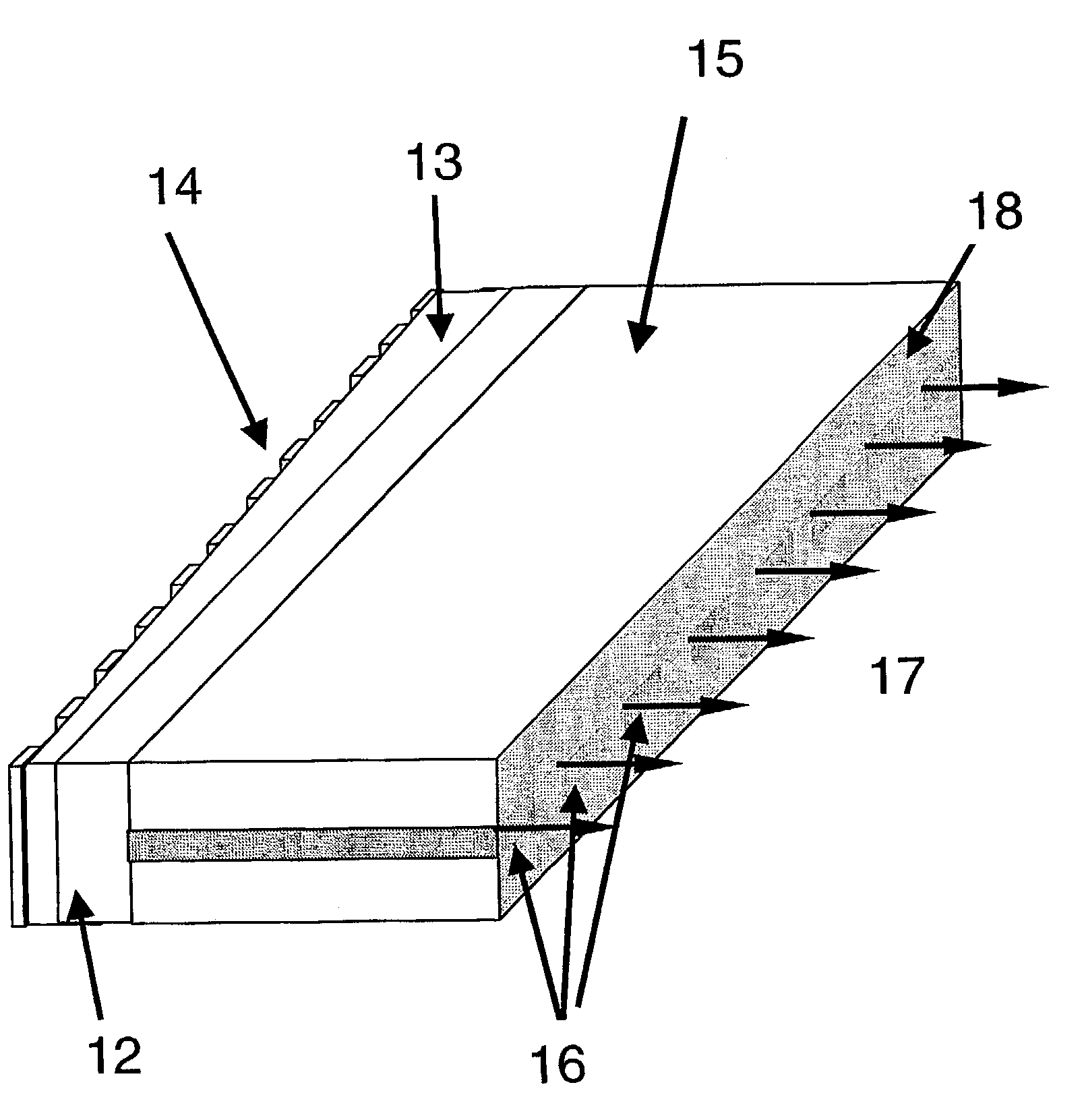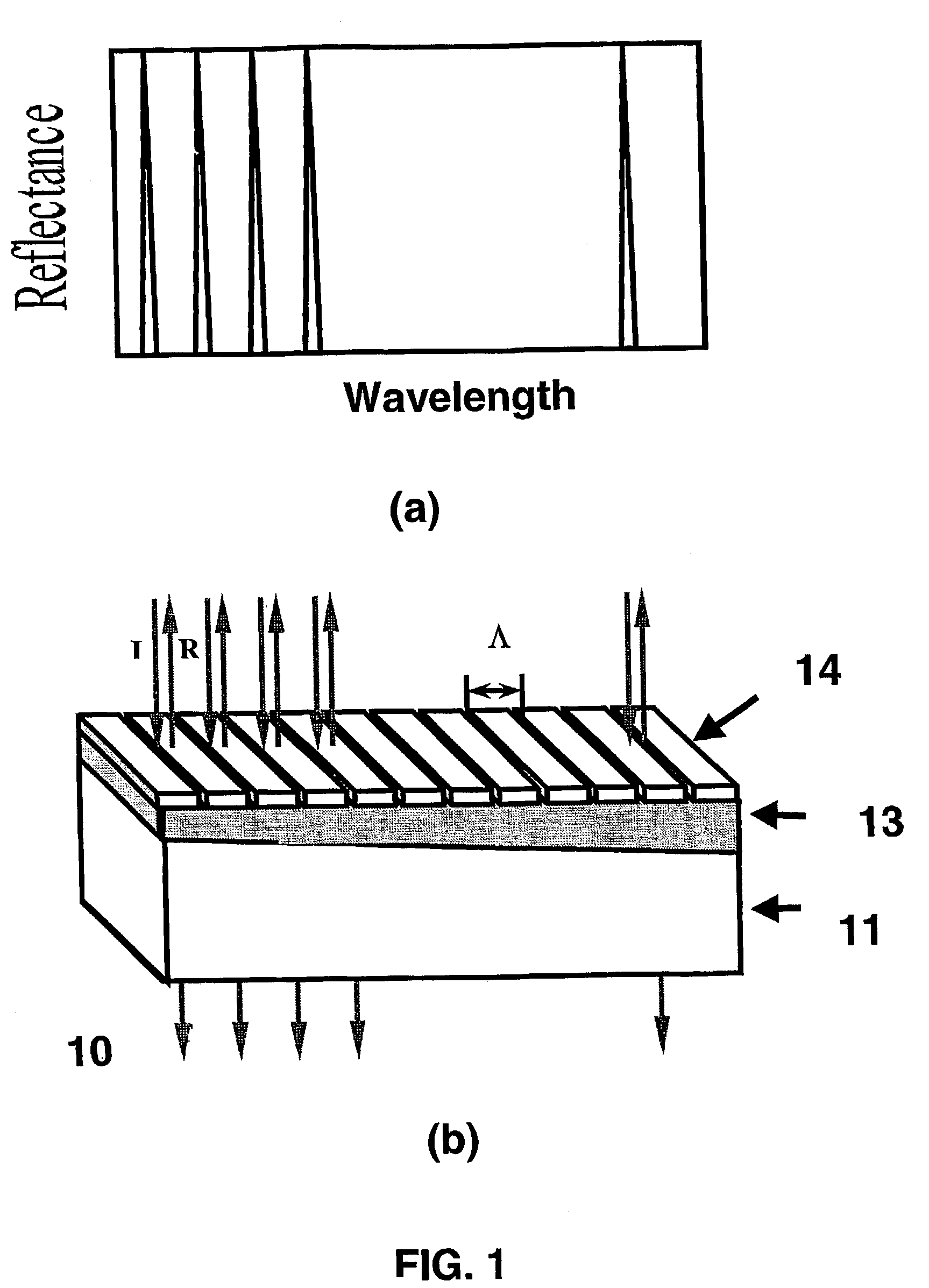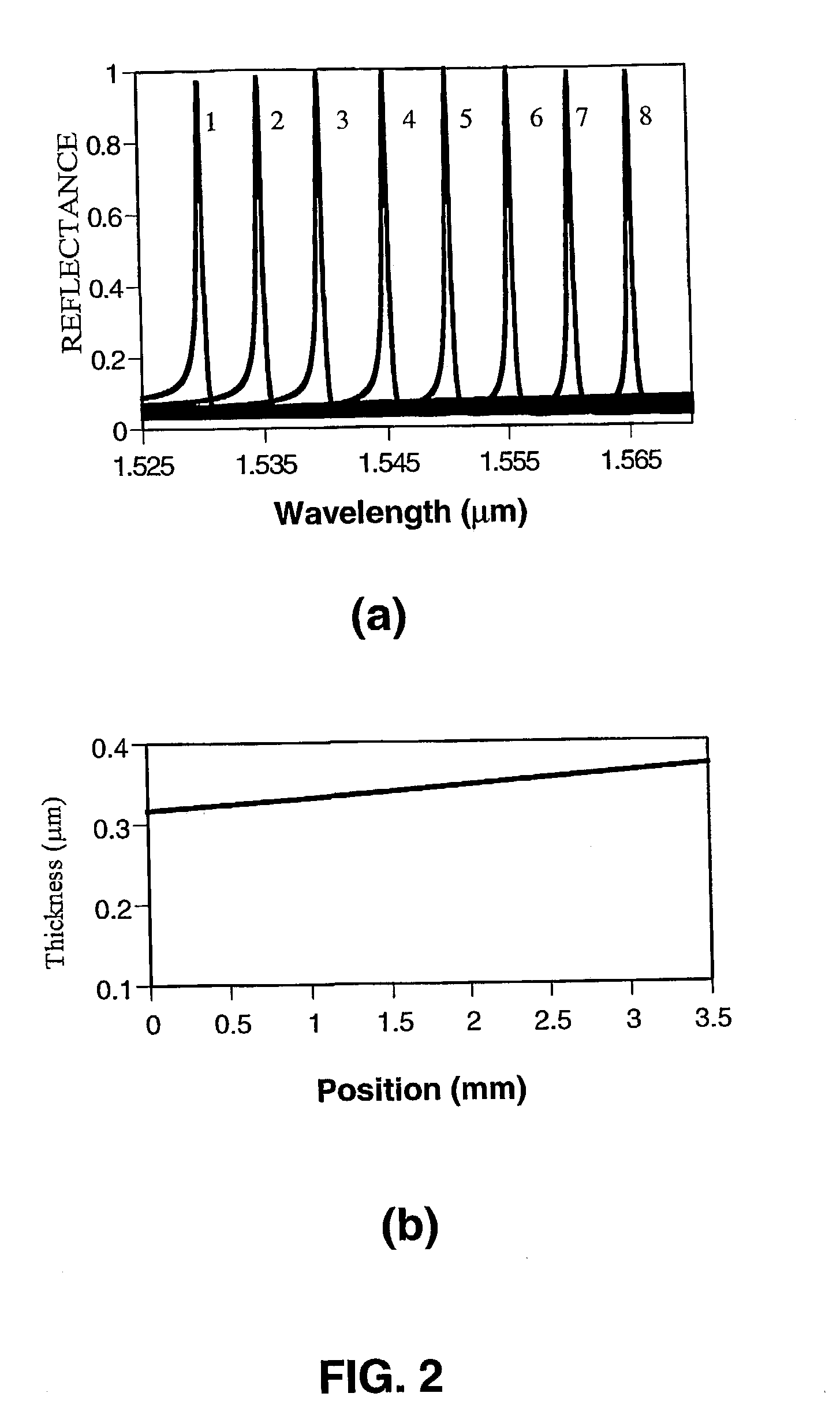Laser array for generating stable multi-wavelength laser outputs
a multi-wavelength laser and laser array technology, applied in the field of optical networks, can solve the problems of high cost of making such laser arrays, inability to provide all those features, and complex channel tuning mechanisms of current mwl arrays, so as to improve the line shape of reflection spectra, improve the stability of local refractive index in any sectional position of the device, and improve the effect of thermal stability
- Summary
- Abstract
- Description
- Claims
- Application Information
AI Technical Summary
Benefits of technology
Problems solved by technology
Method used
Image
Examples
second embodiment
[0037]In the invention shown in FIG. 5, a wavelength selectable optical device is externally aligned to a laser array to achieve multi-wavelength outputs. The MWL array in this embodiment is formed by a body 15, a plurality of identical active elements 16, a high-reflection coating 31 on one of the common facets of the body, a micro-lens array 30 on the other side of the body, and a wavelength selectable optical device 10. Similarly, the optical device 10 contains a substrate 11, a non-uniform waveguide layer (thickness varied or refractive index varied) 13, and a grating layer 14. The number of the micro-lenses in the lens array 30 is equal to the number of the active elements 16, and the distance between two adjacent lenses is the same as that of two adjacent active elements 16. The micro-lens array 30 is aligned with one of the common emitting facets of the active elements 16 so that the light emitted from each of the active elements 16 is collimated by a corresponding micro-lens...
first embodiment
[0040]Laser resonant cavities in this embodiment are formed by the high-reflection facet 41, the active elements 16, the polished facet 42, and the optical device 10. The polished facet 42 is able to bend the light from each of the active elements 16 by 90 degrees. The bent light then strikes the optical device 10 in a corresponding position, which feeds the light back at a selected wavelength. When the light reaches the facet 42 again, it is bent again, traveling back into the active element 16. Since the reflectivity of the coated facet 41 is close to 100%, the light emitted from this facet is negligible. The optical device 10 located on the wafer surface can be designed with reflectivity less than 100% so that it also functions as laser output couplers. Thus, emission of laser lights from the surface of the wafer is achieved. For the same reasons discussed for the first embodiment, the outputs contain MWL beams. This structure is suitable for mass production. The 45-degree polish...
PUM
 Login to View More
Login to View More Abstract
Description
Claims
Application Information
 Login to View More
Login to View More - R&D
- Intellectual Property
- Life Sciences
- Materials
- Tech Scout
- Unparalleled Data Quality
- Higher Quality Content
- 60% Fewer Hallucinations
Browse by: Latest US Patents, China's latest patents, Technical Efficacy Thesaurus, Application Domain, Technology Topic, Popular Technical Reports.
© 2025 PatSnap. All rights reserved.Legal|Privacy policy|Modern Slavery Act Transparency Statement|Sitemap|About US| Contact US: help@patsnap.com



